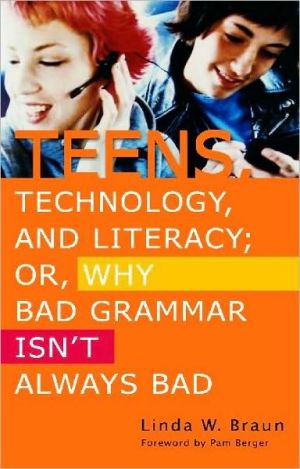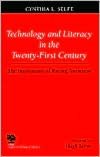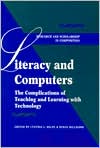Teens, Technology, and Literacy; Or, Why Bad Grammar Isn't Always Bad
Are you bothered by the bad grammar, emoticons, acronyms, and poor spelling that are ubiquitous in cyberspace, and especially prevalent in teen communications? Do you lament that today's technologies are ruining the reading and writing skills of teens? Well, think again.\ This author proposes that today's teens are actually exploring and developing new literacies, and learning to use technology in the most effective ways possible. After examining some of the technologies teens commonly use...
Search in google:
Are you bothered by the bad grammar, emoticons, acronyms, and poor spelling that are ubiquitous in cyberspace, and especially prevalent in teen communications? Do you lament that today's technologies are ruining the reading and writing skills of teens? Well, think again.This author proposes that today's teens are actually exploring and developing new literacies, and learning to use technology in the most effective ways possible. After examining some of the technologies teens commonly use (IM, webblogs, podcast, games), Braun describes how these technologies affect reading, writing, and communication habits and skills; and how they are actually creating new communities of learning. Expand your perspective on what defines literacy, and learn how you can maximize the learning that teens acquire in using new technologies by integrating technologies into your programs and services. A must-read for librarians, teachers, and anyone else who works with teens in grades 6 and up. VOYA Braun does educators, especially librarians, a great service by writing this book. Literacy has traditionally been defined within the parameters of reading and writing; Braun shows that every type of technology used by teens for communication, schoolwork, and leisure reinforces and hones literacy skills. Clear, concise, and intelligent, this volume is a treasure trove of information. After establishing the importance of technology to "digital natives" (teens) who incorporate technology into virtually every facet of their lives, Braun goes on to explain the various technologies to "digital immigrants" (older generations). For those not knowledgeable about wikis, blogs, and podcasts, this book offers good definitions and insight into their applications. Want to know what a vodcast is? Or what folksonomy means? This volume explains new technologies in a user-friendly way. Most important, Braun gives concrete examples of how to integrate various forms of technology into adults' work with teenagers. Specific projects, such as teens writing wikis for the library and adding user comments to book descriptions in the library catalog, are highlighted and explained. Extremely helpful appendixes supply the teacher or librarian with sites to visit for solid information, further ideas, and examples. Revelatory and sharp, this unique book offers a wonderful overview of the various technologies used by teens and supplies great material for educators as well. The many mind-expanding ideas offered by Braun are sure to guarantee positive interactions with teen students and library patrons.
\ From the Publisher"This book presents tools, such as blogs, Wikis, podcasts, RSS (really simple syndication or rich site survey), and IM (instant messaging)-all powerful communication tools for teens in addition to being useful tools for literacy. Braun encourages readers to embrace these technologies and provides many sound explanations as to why and how they support literacy for students….She also offers suggestions for collaborative student projects, including creating a Wiki around a report or writing and producing a podcast. There are numerous example of sites that readers can visit to see examples of the technology in use. Appendixes list Web-based content-creation tools as well as information on finding blogs and podcasts. A third appendix lists other useful resources for keeping up with technology. This is a valuable tool for anyone interested in increasing his or her knowledge of new technologies and using these technologies to improve programming and curriculum."\ -\ Booklist/Professional Reading\ "Braun explores the ways teens communicate in cyberspace, considering how the various technologies affect literacy and communication habits and skills. The author believes that, in spite of the commonality of bad grammar, acronyms, and poor spelling, communication via instant messaging, email, and podcasting is creating a new community of learning and is a boon to literacy. Here, she supports these findings and offers strategies to librarians and educators for taking advantage of the type of learning those technologies encourage."\ -\ Reference & Research Book News\ "Braun shows teachers, administrators, and librarians how to incorporate today's technologies into the development of literacy skills. The author backs up the grammar used in IMs and text messaging by explaining how these technologies promote better literacy in the classroom. She takes readers through literacy as it has been defined in the past and how it is being redefined for 21st-century learners. She also provides ideas for hands-on experience for using the new technologies in libraries or classrooms by giving links and examples of technology in action and its relationship to literacy. While the screen captures are blurry, Braun provides the link below the screen to view the actual site. Additional resources and uses for all the new technologies discussed are appended. This book is a must for most collections."\ -\ School Library Journal\ "The information in this book is explained simply and concisely, and is useful for anyone who both wants to know more about the new communication mediums….The book provides a wealth of information for the classroom teacher or librarian who wants to know more about the newer technologies and how to use them successfully with the this age group. Recommended."\ -\ Library Media Connection\ "Braun does educators, especially librarians, a great service by writing this book….Clear, consice, and intelligent, this volume is a treasure trove of information….For those not knowledgeable about wikis, blogs, and podcasts, this book offers good definitions and insight into their applications….Revelatory and sharp, this unique book offers a wonderful overview of the various technologies used by teens and supplies great material for educators as well. The many mind-expanding ideas offered by Braun are sure to guarantee positive interactions with teen students and library patrons."\ -\ VOYA\ \ \ \ \ \ VOYA\ - Rachelle Bilz\ Braun does educators, especially librarians, a great service by writing this book. Literacy has traditionally been defined within the parameters of reading and writing; Braun shows that every type of technology used by teens for communication, schoolwork, and leisure reinforces and hones literacy skills. Clear, concise, and intelligent, this volume is a treasure trove of information. After establishing the importance of technology to "digital natives" (teens) who incorporate technology into virtually every facet of their lives, Braun goes on to explain the various technologies to "digital immigrants" (older generations). For those not knowledgeable about wikis, blogs, and podcasts, this book offers good definitions and insight into their applications. Want to know what a vodcast is? Or what folksonomy means? This volume explains new technologies in a user-friendly way. Most important, Braun gives concrete examples of how to integrate various forms of technology into adults' work with teenagers. Specific projects, such as teens writing wikis for the library and adding user comments to book descriptions in the library catalog, are highlighted and explained. Extremely helpful appendixes supply the teacher or librarian with sites to visit for solid information, further ideas, and examples. Revelatory and sharp, this unique book offers a wonderful overview of the various technologies used by teens and supplies great material for educators as well. The many mind-expanding ideas offered by Braun are sure to guarantee positive interactions with teen students and library patrons.\ \ \ School Library JournalBraun shows teachers, administrators, and librarians how to incorporate today's technologies into the development of literacy skills. The author backs up the grammar used in IMs and text messaging by explaining how these technologies promote better literacy in the classroom. She takes readers through literacy as it has been defined in the past and how it is being redefined for 21st-century learners. She also provides ideas for hands-on experience for using the new technologies in libraries or classrooms by giving links and examples of technology in action and its relationship to literacy. While the screen captures are blurry, Braun provides the link below the screen to view the actual site. Additional resources and uses for all the new technologies discussed are appended. This book is a must for most collections.\ —Lori E. DonovanCopyright 2006 Reed Business Information.\ \ \


